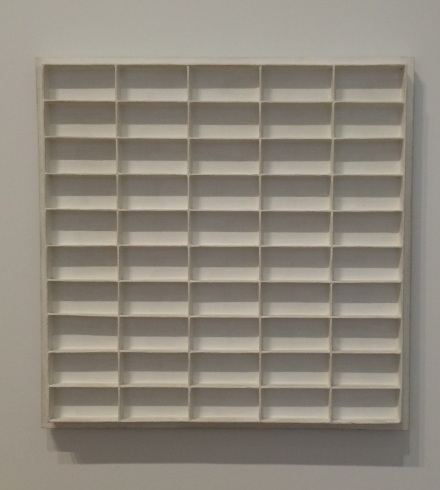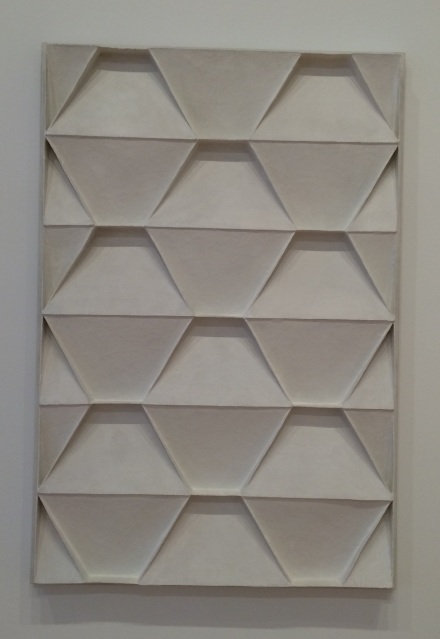The David Zwirner Gallery’s 20th Street branch in Chelsea is presenting a large show of the work by one of the most influential Dutch artists of the last half of the twentieth century, Jan Schoonhoven. A member of the Nul Groep in Holland, Schoonhoven was connected to the international art movement “ZERO Group”. The artist members of these groups worked to develop a type of art that was more objective then the more emotionally expressive art created after WWII. Schoonhoven established techniques to create monochromatic wall sculptures that relied on clean geometric lines to explore form,light, and shadows.
The rectangular grids like the ones seen in “R70-28” from 1970 are probably the types of structures that became most famous. A square relief sculpture with 5 columns with ten rows each. The white walls are the grid lines, creating rectangles with a 1:2 ratio of height to width. The exhibition at David Zwirner is quite inclusive and includes works on paper, earlier geometric work, as well as work featuring more complex geometry.
Schoonhoven used latex paint, paper, cardboard and wood to assemble these sculptures. The hand of the artist has given these 3-D spaces an ageless quality. Although the geometry is all straight edges there is a softness to the lines of these shadow boxes.
The work “R69-33” from 1969 has a rather complex pattern made up of trapezoidal surfaces. They are positioned into rows with horizontal axes of symmetry. The longer side of each trapezoid is closest to the viewer. This work offers a dramatic example of Schoonhoven’s use of shadows.
“Diagonalen” from 1967 is one of my favorite pieces in the show. The grid format is intact but by bisecting each grid square on alternating diagonals the artist has created a lattice of right triangles. One of the most exciting elements of Schoonhoven’s wall sculptures is that they change depending on the angle from which you see the art. As the viewer moves around the gallery the shadows are changing.
All pictures courtesy of the gallery.
Susan Happersett


